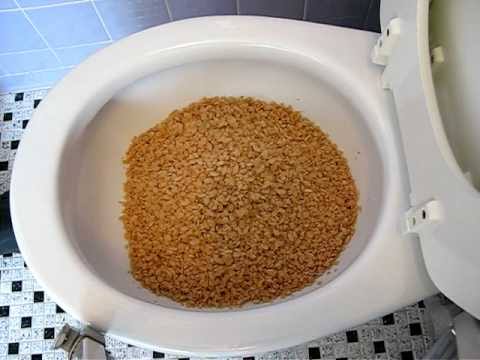Is it Permissible to Flush Food Down the Toilet?
Is it Permissible to Flush Food Down the Toilet?
Blog Article
On this page down the page you can discover a good deal of quality advice around What Can Happen If You Flush Food Down the Toilet?.

Introduction
Many people are usually faced with the predicament of what to do with food waste, especially when it concerns leftovers or scraps. One common concern that occurs is whether it's alright to purge food down the commode. In this article, we'll delve into the reasons people may think about purging food, the effects of doing so, and alternate methods for appropriate disposal.
Reasons that individuals could take into consideration flushing food
Lack of awareness
Some individuals may not recognize the prospective damage caused by flushing food down the bathroom. They might erroneously think that it's a harmless technique.
Comfort
Purging food down the commode might feel like a quick and simple service to taking care of unwanted scraps, especially when there's no neighboring trash bin available.
Laziness
In many cases, people might merely choose to flush food out of sheer negligence, without considering the consequences of their actions.
Effects of flushing food down the toilet
Ecological influence
Food waste that ends up in rivers can contribute to air pollution and harm water communities. Additionally, the water used to purge food can stress water sources.
Plumbing problems
Purging food can bring about clogged up pipelines and drains, triggering pricey pipes repair services and aggravations.
Kinds of food that should not be flushed
Fibrous foods
Foods with coarse textures such as celery or corn husks can get tangled in pipes and create blockages.
Starchy foods
Starchy foods like pasta and rice can take in water and swell, resulting in clogs in pipelines.
Oils and fats
Greasy foods like bacon or food preparation oils ought to never ever be flushed down the bathroom as they can solidify and create clogs.
Appropriate disposal methods for food waste
Using a waste disposal unit
For homes furnished with garbage disposals, food scraps can be ground up and purged with the plumbing system. Nonetheless, not all foods are suitable for disposal in this fashion.
Recycling
Particular food packaging products can be recycled, lowering waste and lessening environmental influence.
Composting
Composting is a green means to deal with food waste. Organic products can be composted and made use of to enhance dirt for gardening.
The relevance of proper waste management
Reducing ecological injury
Proper waste management methods, such as composting and recycling, help minimize pollution and maintain natural deposits for future generations.
Shielding pipes systems
By avoiding the technique of flushing food down the commode, homeowners can protect against expensive plumbing repair services and preserve the stability of their plumbing systems.
Verdict
Finally, while it might be alluring to flush food down the commode for convenience, it is necessary to recognize the possible effects of this activity. By adopting proper waste monitoring practices and throwing away food waste sensibly, individuals can add to much healthier plumbing systems and a cleaner atmosphere for all.
FLUSH FOOD DOWN THE TOILET?
FLUSHING FOOD CAN CAUSE BLOCKED DRAINS IN YOUR HOME
All of the plumbing fixtures in your home are connected to the same sewer pipe outside of your home. This outdoor sewer pipe is responsible for transporting all the wastewater from your home to the Council sewer mains. Even small pieces of food that go down the kitchen sink can cause problems for your sewer. It should therefore be obvious that flushing larger bits of food, such as meat, risks a clog in either the toilet itself or the sewer pipes. Flushing greasy food is even more problematic because oil coagulates when it cools, coating the interior lining of your pipes.
THE TOILET IS NOT A BIN
Food isn’t the only thing that people shouldn’t be flushing down the toilet. People use the toilet to dispose of all kinds of things such as tampons, makeup wipes, dental floss, kitty litter and even underwear. Water goes to great lengths to educate residents about the high costs and stress placed on wastewater treatment systems simply from people flushing the wrong stuff down the toilet. It costs taxpayers millions of dollars each year, and homeowners thousands in blocked drain repairs.
FLUSHING FOOD IS A WASTE OF WATER
Flushing food is a waste of our most precious resource - water. In June this year Level 1 water restrictions were introduced to protect water supply from drought conditions. Much of New South Wales continues to be affected by prolonged drought with recent figures revealing up to 97 per cent of the state remains in drought. Depending on whether you have a single or dual flush toilet, every single flush uses between five and 11 litres of water. In the current climate this is a huge amount of water to be wasting on flushing food that should be placed in the bin (or better yet, the compost).
https://www.jabplumbingsolutions.com.au/blog/can-you-flush-food-down-the-toilet

We hope you liked our excerpt about Flushing Food Down the Toilet?. Thank you so much for taking time to browse our article post. Those who enjoyed reading our article please remember to share it. I praise you for your time. Kindly check up our blog back soon.
Get A Quote Report this page